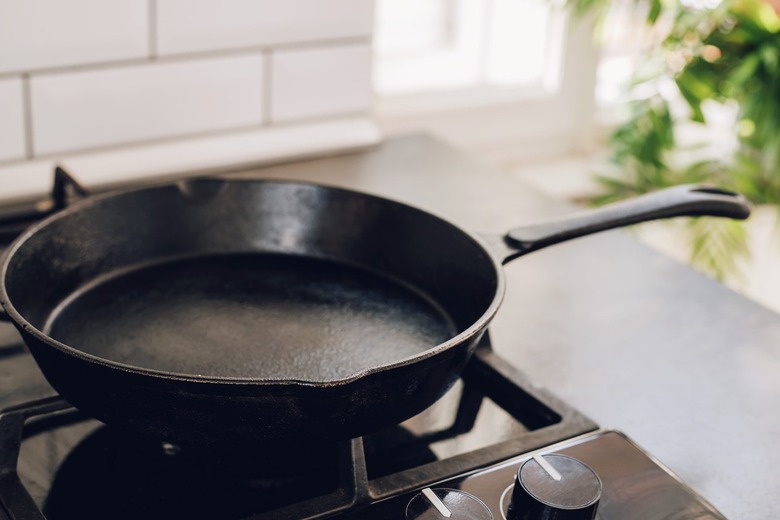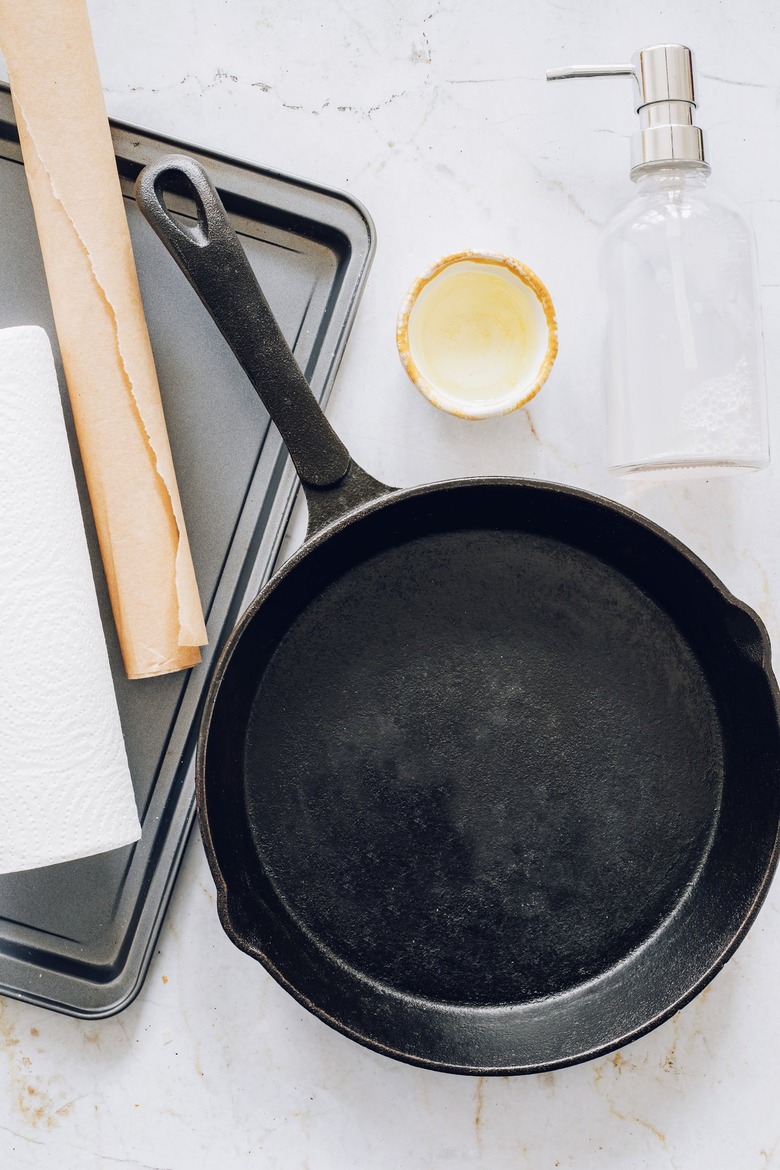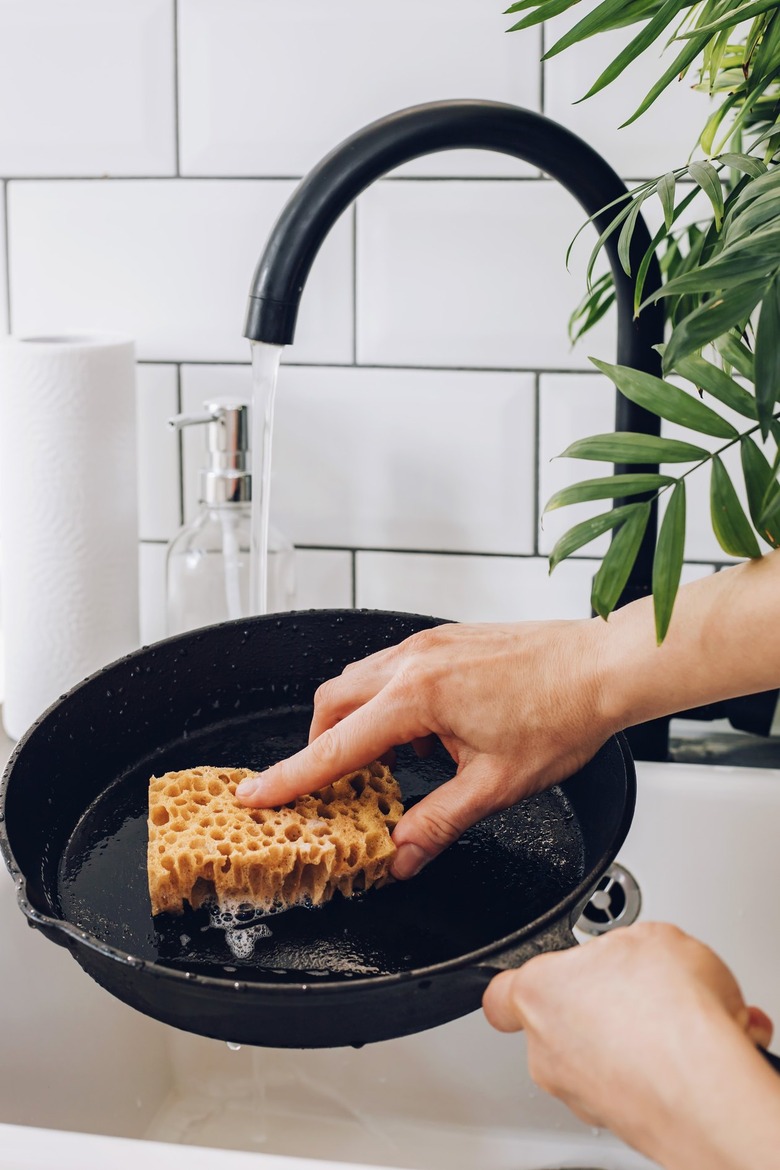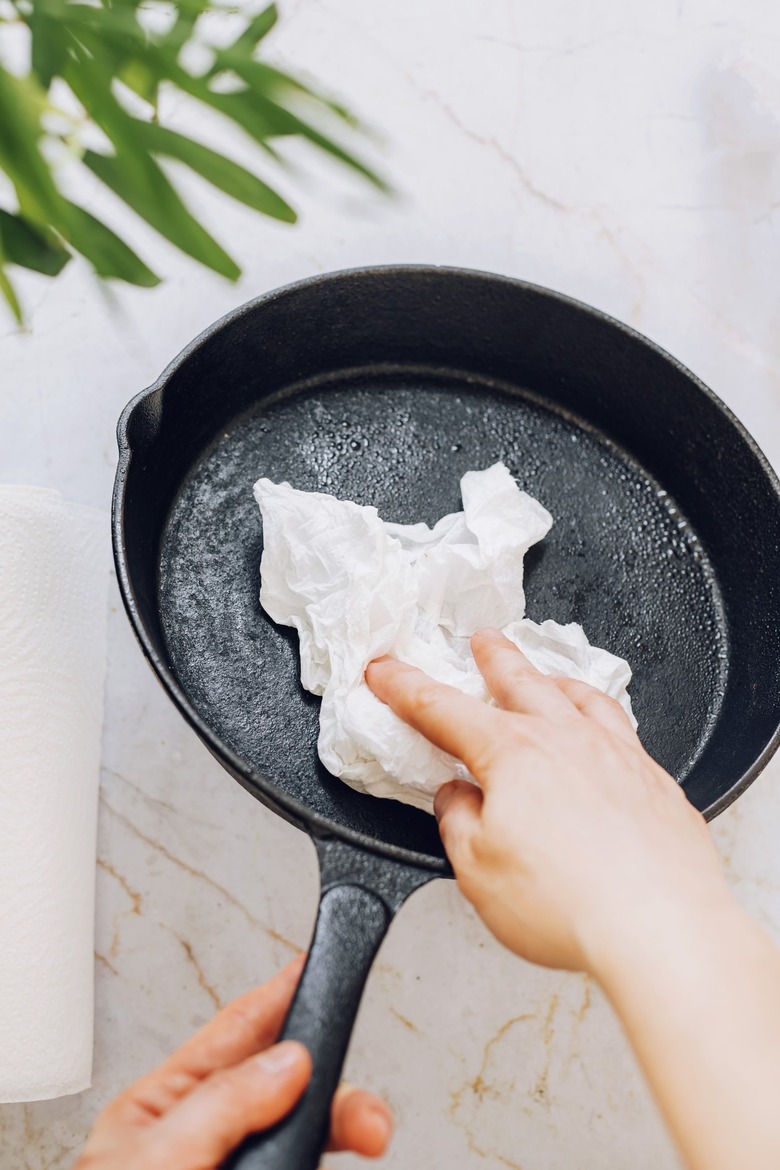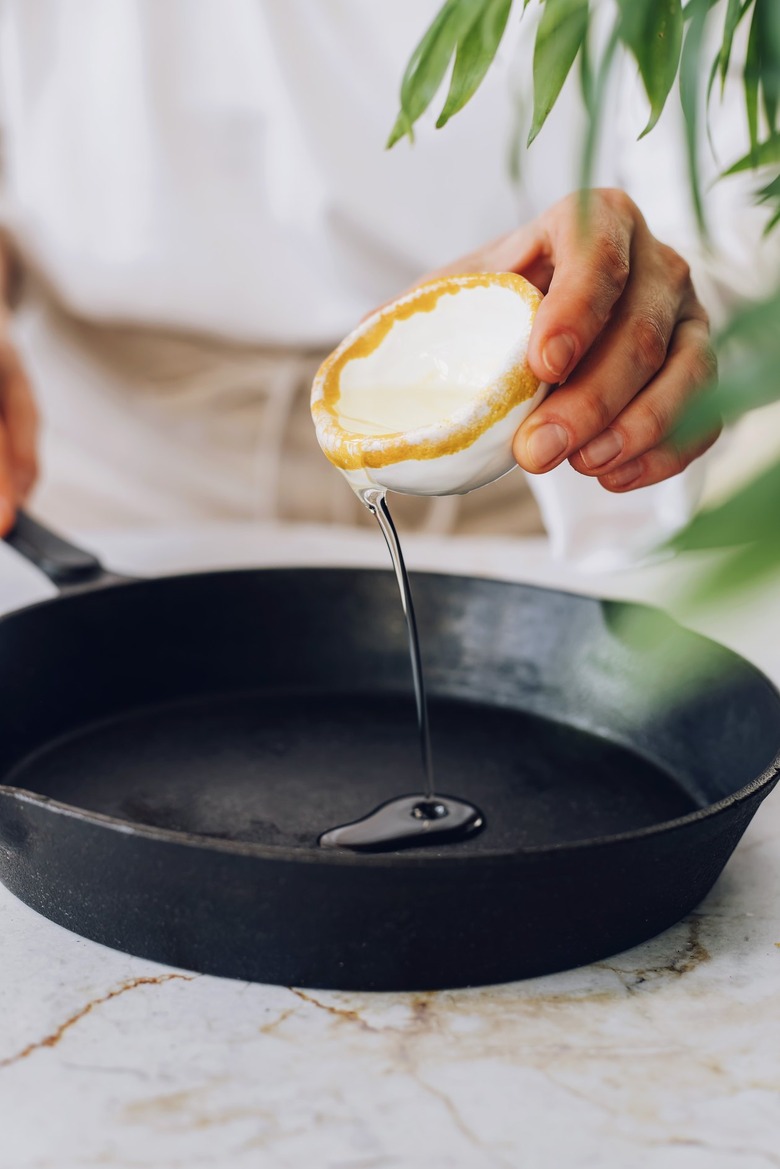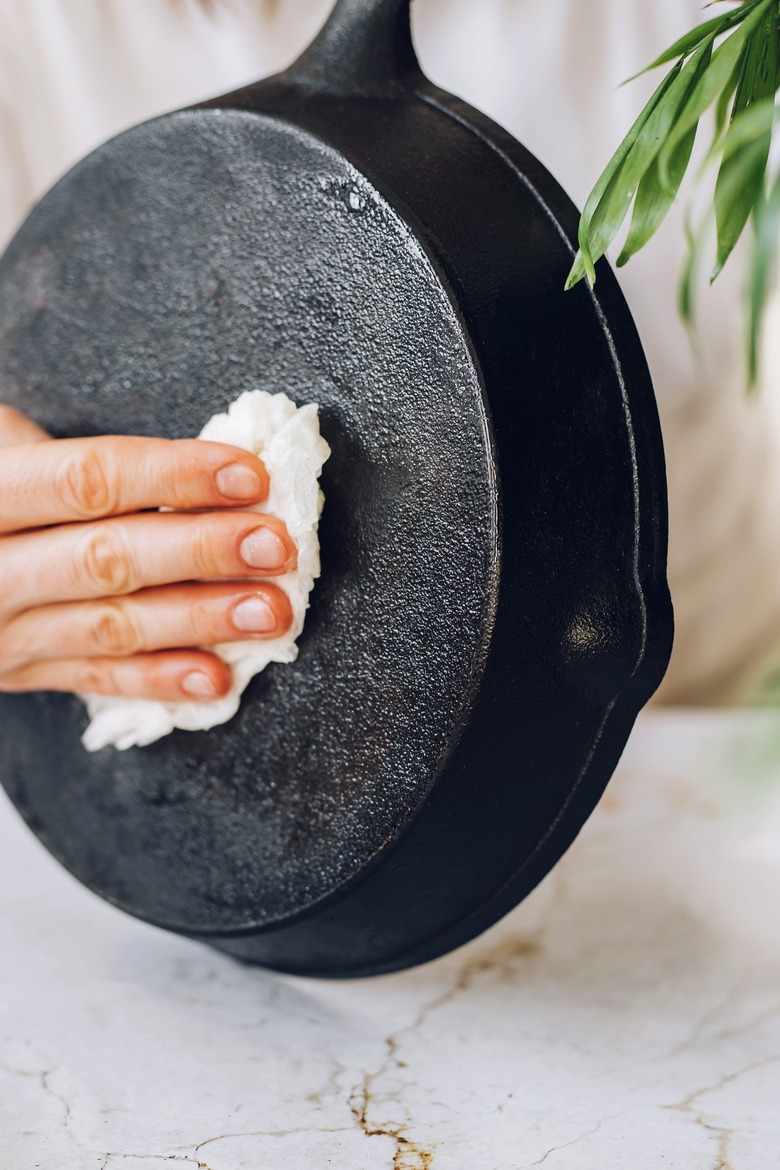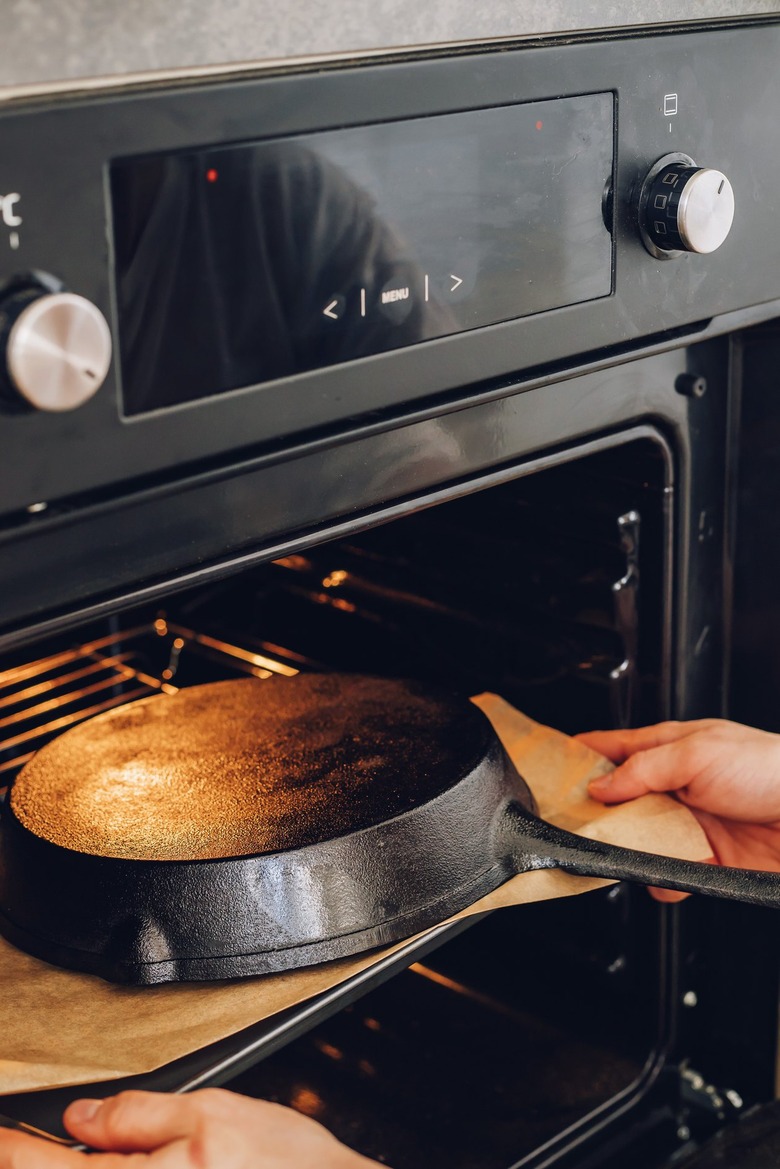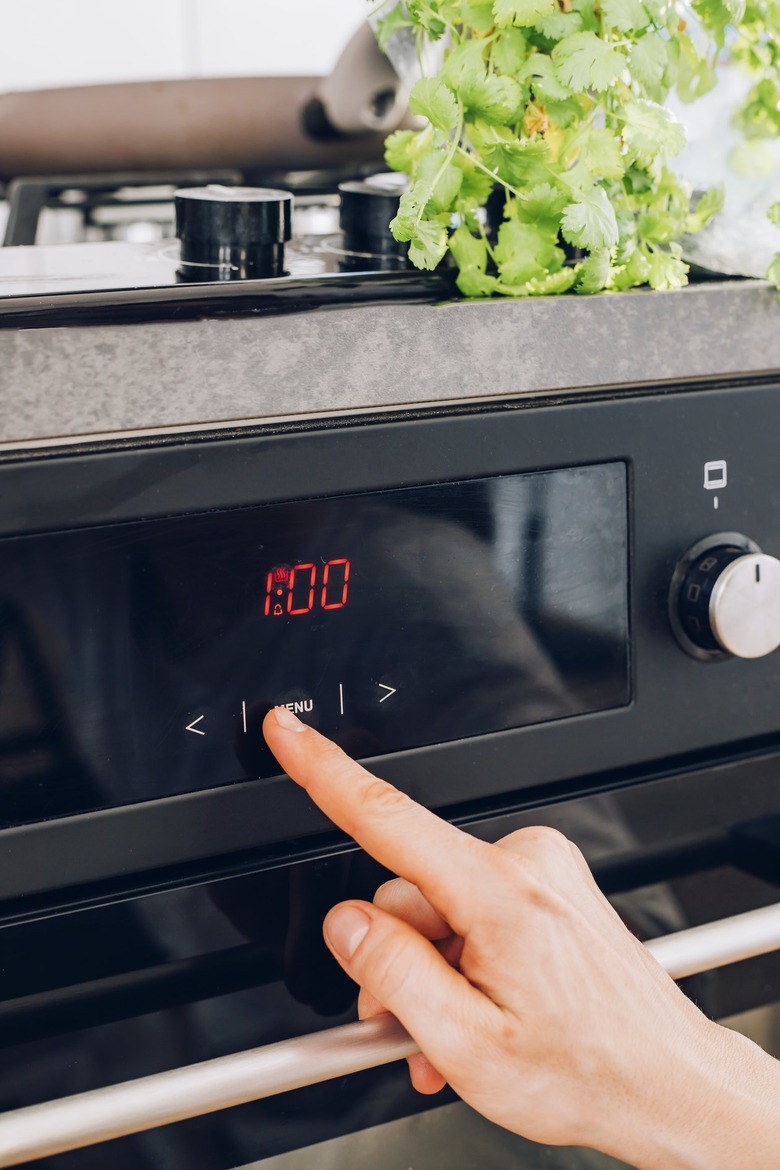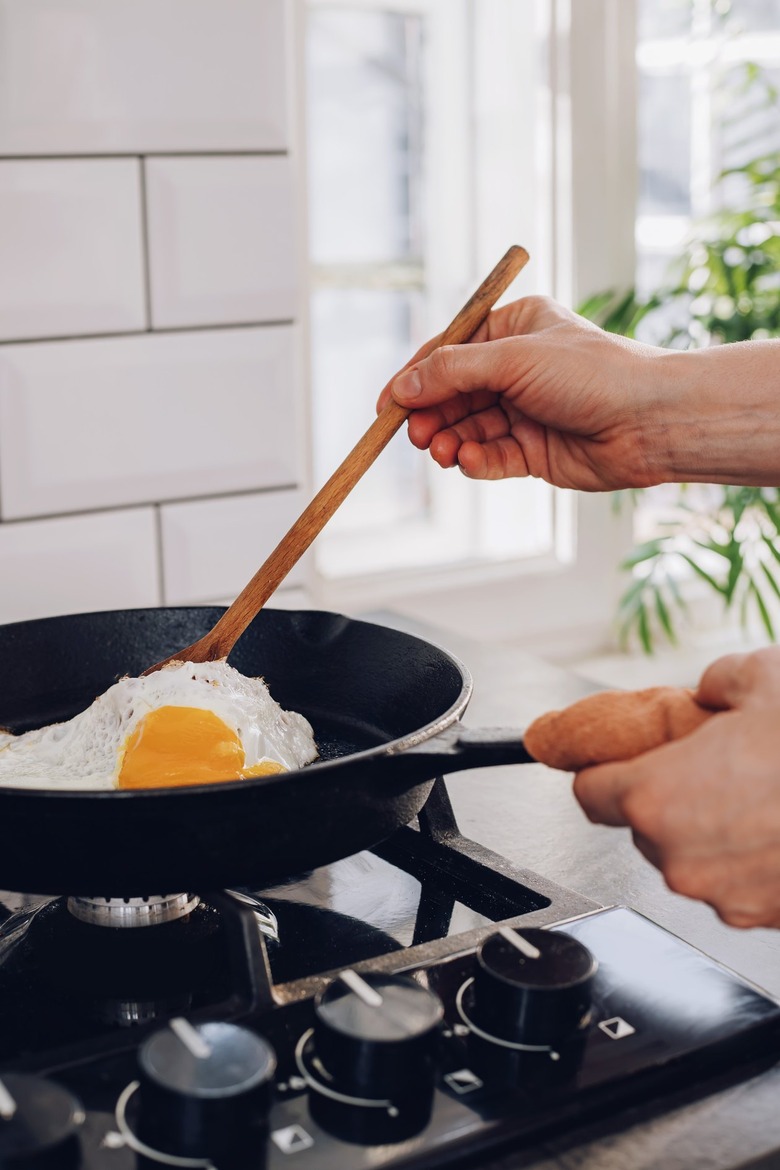How To Season A Cast Iron Skillet
Ever try to fry eggs in a fancy new cast iron skillet? Most likely, your eggs turned into a hot scrambled mess that was a nightmare to clean. (But, here's an easy way to clean, just in case.) What happened to the wonder pan everyone raved about? It's probably because you skipped one important step: seasoning.
What is seasoning? Seasoning is a simple process of coating the skillet with oil and heating it to a high temperature. An iron skillet needs this for two reasons.
First, the skillet's surface needs protection from air, water, and whatever food you plan to cook in it or the iron can start to rust. Second, when the oil bonds to the iron it creates a thin layer of hardened oil that's resistant to sticking. Voila! Now you have a nonstick pan that's perfect for frying eggs.
Here are the simple steps for seasoning a cast iron skillet.
Things Needed
-
Skillet
-
4 teaspoons of vegetable oil (canola or corn)
-
Oven
-
Baking pan
-
Parchment paper
-
Paper towels
-
Soap and water
1. Wash and dry the skillet.
If the skillet is brand new, remove all the packaging and give it a thorough washing. Yes, it's fine to use warm water and dish soap to get it properly clean. If your skillet is older, give it a good scrubbing before seasoning to remove any stuck on food or rust.
Then rinse well and dry with paper towels or a soft towel. Make sure the skillet is completely dry before continuing; you don't want any water between the skillet and the layer of oil.
2. Coat the skillet with oil.
Add two teaspoons of oil to the skillet. Liquid oils with a high smoke point like canola, vegetable, or corn oil are the easiest to apply, but you can also use a solid fat like shortening.
Use your fingers or a paper towel to rub the oil onto the whole surface until there's an even layer of oil and it no longer looks greasy. You don't want pools of oil so wipe some out if there's excess.
Use another two teaspoons of oil to grease the outside and bottom of the skillet.
3. Heat the skillet.
Preheat the oven to 375 degrees Fahrenheit. Place the cast iron skillet upside down on a baking sheet lined with parchment paper in the oven on a middle rack. The baking sheet is there to catch any oil drips.
Bake the skillet for one hour. If the pan was in really bad shape, take it out and apply another layer of oil, and then put it back in the oven for an hour. You can repeat the oil and heating process two to four times to create a nice thick layer of oil.
When the baking is complete, turn off the heat and let the skillet cool in the oven.
4. Use the skillet properly.
Now the cast iron skillet is ready to use, and the layer of oil should protect the skillet's surface as well as keep food from sticking. To keep the skillet in good shape, clean it properly and avoid leaving water sitting in the skillet (no soaking!) and re-season it as needed.
